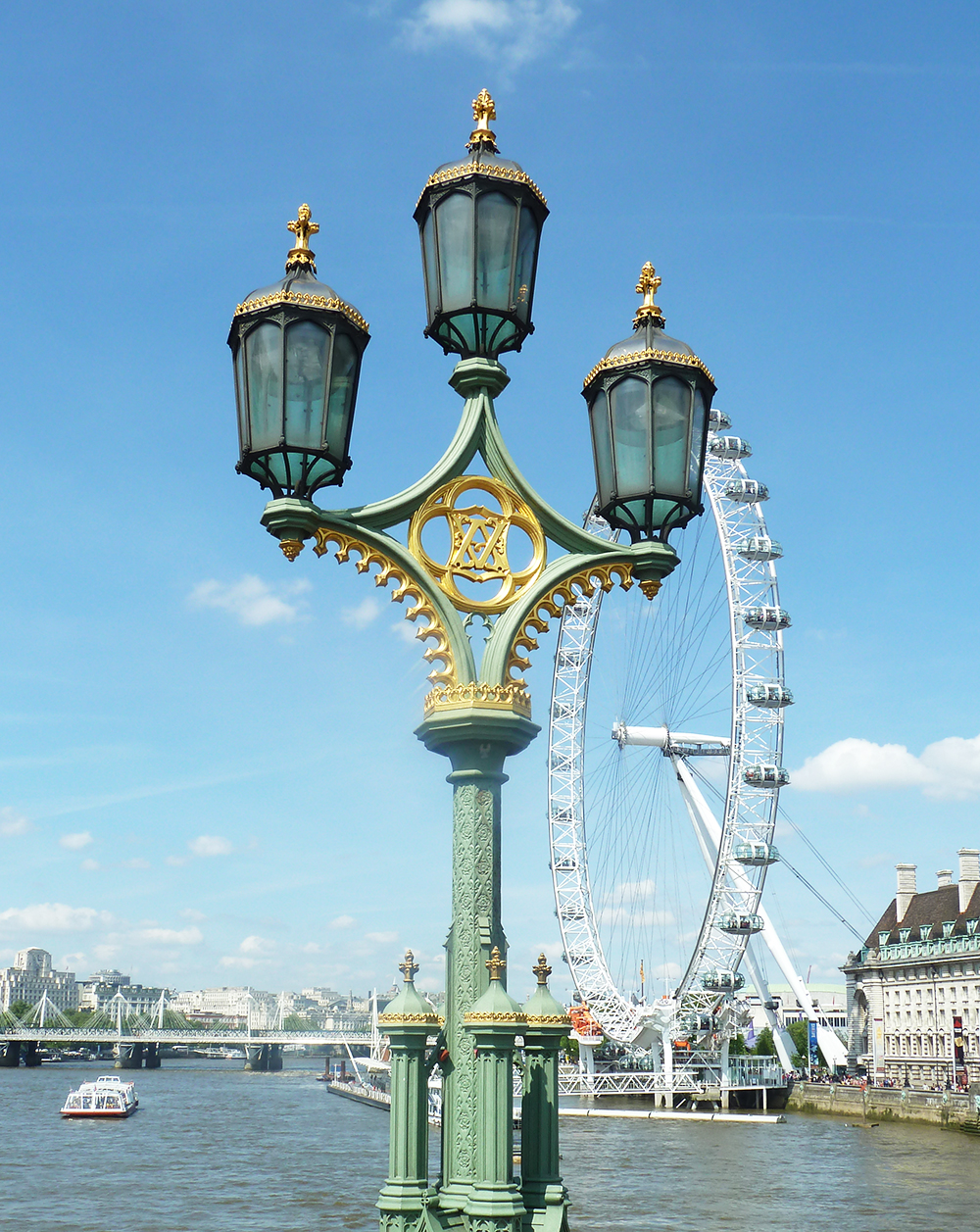Westminster Bridge
- Project: Refurbishment of Westminster Bridge lighting stock
- Client: Transport for London
- Also involved: Westminster City Council, London Borough of Lambeth, English Heritage
Over its’ 146 year history, the street lighting on Westminster Bridge had become extremely degraded in terms of appearance and performance. investigations showed the well-ventilated gas lanterns had undergone significant alterations when converted to electricity, including the addition of doors and numerous efforts to weatherproof the lanterns. The difficulty of maintaining the lanterns was evidenced by poor lighting reliability and performance and also their dilapidated appearance.
Metcraft appointed to undertake refurbishment
Transport for London decided to completely refurbish the street lighting to improve its’ performance and reliability and thereby enhance the safety of bridge users. Westminster City Council, London Borough of Lambeth and English Heritage were engaged throughout the project; conditional Listed Building Consent was secured in 2006 and the work was undertaken by Metcraft throughout 2008. The refurbishment exemplifies conservation best practice and aimed to minimise intervention into the original construction of the lanterns, preferring to do the least possible, whilst utilising traditional methods and materials.
Lighting coloumns
The only parts refurbished on-site were the cast iron lighting columns, which were enclosed, grit blasted, painted and gilded in-situ. To minimise public disruption, work was undertaken outside peak hours with typically only one of four traffic lanes closed and footpaths on both sides of the bridge open to pedestrians. Temporary lighting was maintained during the works and hoardings isolated the public when appropriate.
Lanterns
The lanterns comprise brass castings, soldered and screwed together. The lanterns were completely disassembled and cleaned, replacement parts were incorporated and sundry repair works completed before the lanterns were rebuilt. in accordance with historic practice, all metalwork was patinated to achieve an artificially aged, uniform finish.
The glazing to the bottom part of the lanterns was replaced using glass to match the original work, held in place with copper tabs and oil-based putty. Following the prototyping process and discussions with Planning Officers, the curved glazing to the top of the lantern used a single moulded polycarbonate unit instead of eight curved glass panes. This solution avoids the practical limitations (evident in the original work) of fitting curved, shaped glass and offers significant benefits in terms of improving resilience, weather-tightness, and maintainability whilst avoiding alterations to the surviving original fabric of the lanterns.
Bespoke reflectors
The optical design was challenging due to the lighting columns’ low height and large spacing. To achieve adequate levels and uniformity of illumination, bespoke reflectors were designed for the lamps, using CAD tools and results from photometry tests. The optics for side and central lanterns differ, and side lantern optics are oriented to distribute light efficiently. New lamps are utilised that have better colour rendering and consume less than half the power of the old equipment. The optical and electrical assembly is housed within an lP65 rated enclosure, a benefit of the design is that the optical unit is not fixed to the lantern and may be unplugged and lifted out once the lantern top is removed.
Future maintenance of the lighting has been carefully considered throughout the design development, giving due regard to cleaning, changing lamps and control gear and future repairs.
Since completing this project, Metcraft have been appointed to work on stage 2 of Westminster’s street lighting refurbishment programme.


